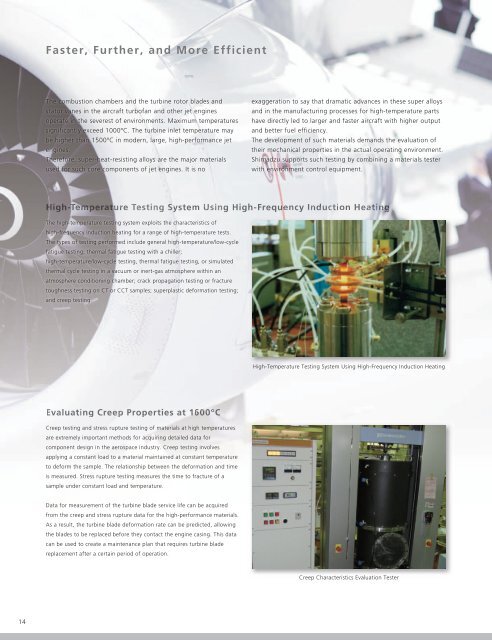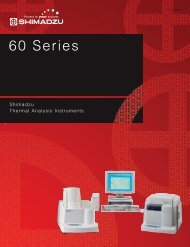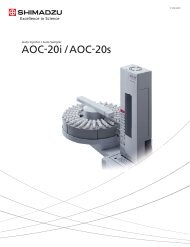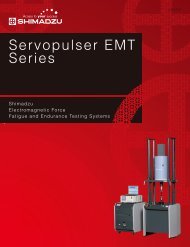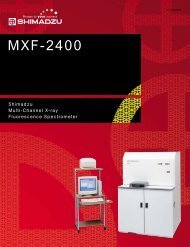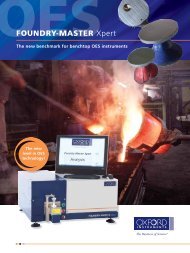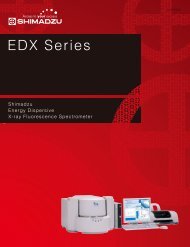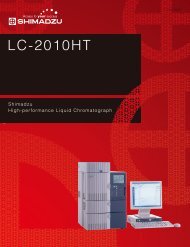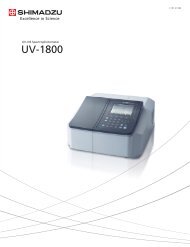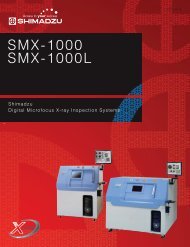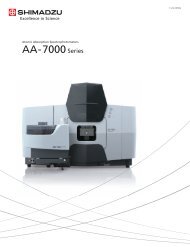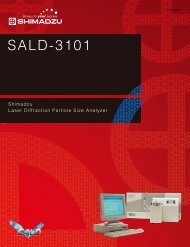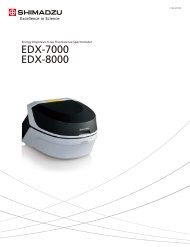Testing and Evaluation Equipment for the Aerospace Industry
Testing and Evaluation Equipment for the Aerospace Industry
Testing and Evaluation Equipment for the Aerospace Industry
You also want an ePaper? Increase the reach of your titles
YUMPU automatically turns print PDFs into web optimized ePapers that Google loves.
Faster, Fur<strong>the</strong>r, <strong>and</strong> More Efficient<br />
The combustion chambers <strong>and</strong> <strong>the</strong> turbine rotor blades <strong>and</strong><br />
stator vanes in <strong>the</strong> aircraft turbofan <strong>and</strong> o<strong>the</strong>r jet engines<br />
operate in <strong>the</strong> severest of environments. Maximum temperatures<br />
significantly exceed 1000ºC. The turbine inlet temperature may<br />
be higher than 1500ºC in modern, large, high-per<strong>for</strong>mance jet<br />
engines.<br />
There<strong>for</strong>e, super-heat-resisting alloys are <strong>the</strong> major materials<br />
used <strong>for</strong> such core components of jet engines. It is no<br />
exaggeration to say that dramatic advances in <strong>the</strong>se super alloys<br />
<strong>and</strong> in <strong>the</strong> manufacturing processes <strong>for</strong> high-temperature parts<br />
have directly led to larger <strong>and</strong> faster aircraft with higher output<br />
<strong>and</strong> better fuel efficiency.<br />
The development of such materials dem<strong>and</strong>s <strong>the</strong> evaluation of<br />
<strong>the</strong>ir mechanical properties in <strong>the</strong> actual operating environment.<br />
Shimadzu supports such testing by combining a materials tester<br />
with environment control equipment.<br />
Hi<br />
gh<br />
-Tem<br />
empe<br />
ratu<br />
ture<br />
<strong>Testing</strong><br />
Sys<br />
tem Using Hi<br />
gh-Frequenen<br />
cy Induc<br />
uction<br />
Heati<br />
ting<br />
The high-temperature testing system exploits <strong>the</strong> characteristics of<br />
high-frequency induction heating <strong>for</strong> a range of high-temperature tests.<br />
The types of testing per<strong>for</strong>med include general high-temperature/low-cycle<br />
fatigue testing; <strong>the</strong>rmal fatigue testing with a chiller;<br />
high-temperature/low-cycle testing, <strong>the</strong>rmal fatigue testing, or simulated<br />
<strong>the</strong>rmal cycle testing in a vacuum or inert-gas atmosphere within an<br />
atmosphere conditioning chamber; crack propagation testing or fracture<br />
toughness testing on CT or CCT samples; superplastic de<strong>for</strong>mation testing;<br />
<strong>and</strong> creep testing.<br />
High-Temperature <strong>Testing</strong> System Using High-Frequency Induction Heating<br />
Evaluati<br />
ng Creep<br />
ep Properties at 160<br />
0ºC<br />
Creep testing <strong>and</strong> stress rupture testing of materials at high temperatures<br />
are extremely important methods <strong>for</strong> acquiring detailed data <strong>for</strong><br />
component design in <strong>the</strong> aerospace industry. Creep testing involves<br />
applying a constant load to a material maintained at constant temperature<br />
to de<strong>for</strong>m <strong>the</strong> sample. The relationship between <strong>the</strong> de<strong>for</strong>mation <strong>and</strong> time<br />
is measured. Stress rupture testing measures <strong>the</strong> time to fracture of a<br />
sample under constant load <strong>and</strong> temperature.<br />
Data <strong>for</strong> measurement of <strong>the</strong> turbine blade service life can be acquired<br />
from <strong>the</strong> creep <strong>and</strong> stress rupture data <strong>for</strong> <strong>the</strong> high-per<strong>for</strong>mance materials.<br />
As a result, <strong>the</strong> turbine blade de<strong>for</strong>mation rate can be predicted, allowing<br />
<strong>the</strong> blades to be replaced be<strong>for</strong>e <strong>the</strong>y contact <strong>the</strong> engine casing. This data<br />
can be used to create a maintenance plan that requires turbine blade<br />
replacement after a certain period of operation.<br />
Creep Characteristics <strong>Evaluation</strong> Tester<br />
14


